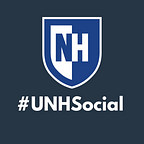How to Remotely Record Professional Podcasts
Whether you hit pause on your in-person podcast and are ready to jump back in with remote interviews or want to launch a new podcast, here are some pro tips for the remote podcaster.
From Session to Sound Board
Your first priority is quality. Without meeting a minimum standard, your interviews won’t shine the way they should. You, and your interviewee, will need the following in your virtual studios: a computer, quality microphone(s), headphones and don’t forget about the importance of a quiet space.
You will also need a way to record and then edit. Your editing software can do a lot, but it cannot improve the quality of a subpar recording. You will need an external microphone, headphones, and editing software. Don’t worry, there are tools, software, and accessories for every budget.
Be sure you test each recording and know how to gauge that your volume levels are within an acceptable range by watching in Adobe Audition, Audacity, Garageband, or your preferred editing software.
If you need some more advanced tutorials, we recommend courses on LinkedIn Learning or YouTube, just search podcasting or editing audio.
A Strategy for Sustainability
We hit pause (or paws) on PodCATS last summer due to COVID, but we’re getting ready to relaunch with all new remote interviews featuring UNH Extension, Donor Relations and The ECenter, just to name a few...
Before we initially began this podcast at UNH, we lined up our guests and planned posting new episodes biweekly. With your podcast, it’s up to you how you schedule it, just be consistent. Populating your calendar with guests and making time to record and edit is highly recommended. It will keep your podcast from going silent for too long and it’s especially important at the beginning, but having a predictable new-episode calendar, or schedule will can help engage followers.
Reaching Your Audience
Depending on who you choose for a podcast host, there may be some built in sharing functionality you can use to your advantage. Things to look for: is it automatically published to Apple, Google, Spotify, and other common podcasting platforms? Does it have a social share button? Can your series be embedded on a website? And what kind of data and analytics do you get about your listeners?
7 Best Podcast Hosting for 2021 Compared
You’ll want to use your existing means of communication, like social media and email, to reach followers and if you have an advertising budget, that listener data can come in very handy in audience targeting.
Tag those you interview and the organizations they’re connected with — ask them to share. Be sure to provide the link and sample language including your account handles — taking the time to do this will help grow your following organically.
Interested in Joining Us?
If you’re part of the University of New Hampshire and have a podcast idea for the UNH PodCATS, email Social.Media@unh.edu. We would love to hear your plan and ideas!
And don’t forget to subscribe to UNH Podcats now!
Written by:
Kris Bowden, Social Media Producer & Digital Content Strategist
Jason Boucher, Director of Social Media at UNH
